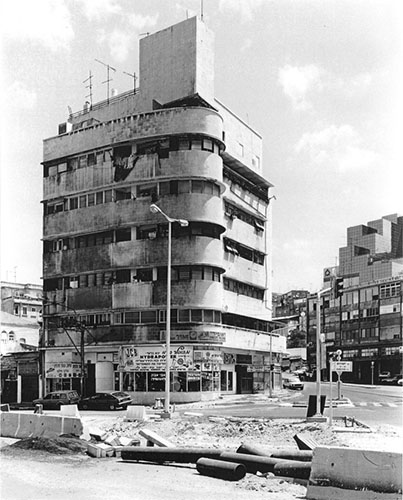 Architect- Adrien Blomme, built 1934-35 2004_.jpg) |
How many art forms can you name that feel as radical today as they did when they were invented? Bauhaus, also known as The International Style, is one that immediately springs to mind. It originated in Germany in the ‘20s, and its global influence has never waned. Its ideals were summed up in four slogans: ornament is a crime; truth to materials; form follows function; and in Le Corbusier's description of houses as "machines for living."
Most of the early structures built in accordance with these strictures were destroyed during WWII. Over the past 20 years, the German photographer Irmel Kamp has documented those remaining in Europe, plus a great many in Tel Aviv which, during the war, became a haven for forward-thinking European architects deemed “degenerate” by the Nazis. Some 4,000 structures from the ‘30s and ‘40s are said to stand in that city alone, and it was Kamp’s photographs of them that helped get the “White City” as it subsequently came to be known, designated as a UNESCO World Heritage Site in 2003.
 |
 Theatre (1).jpg) |
 Architect- LeCorbusier, built 1926-27 2002; gelatin silver print, edition 3_5 20 x 24 inches; 28_5 x 32_5 inches framed IKA 5.jpg) |
Kamp also understands the connection that then existed between painting and architecture. To demonstrate, she places her camera before exterior walls, recording images that reduce three-dimensional volumes to flat planes. Her point-blank shot of a house built by Le Corbusier in 1926, for example, isolates a spare geometric pattern: parallel rectangles at the center of a wall punctuated by a small circle in the upper right-hand corner – a nautical motif that remains in currency to this day. Likewise, Kamp’s photo of a Czech theater, in which interlocking rectangular and cylindrical shapes are raked by a shadow, describes the classic Bauhaus approach of mixing and matching disparate forms. Images like these sum up modernist aesthetics and aspirations as well as any painting you’ll see from Mondrian or Malevich.